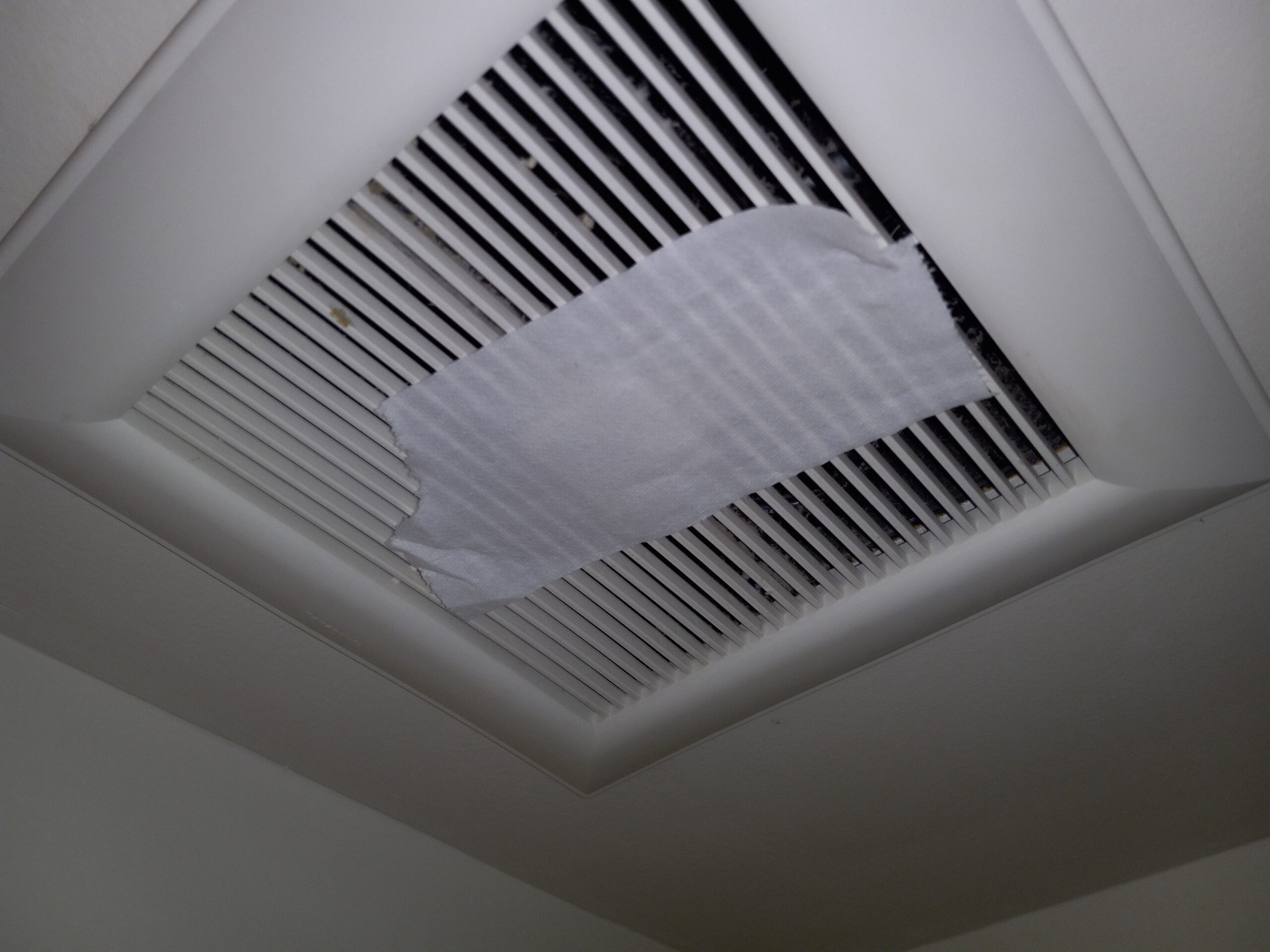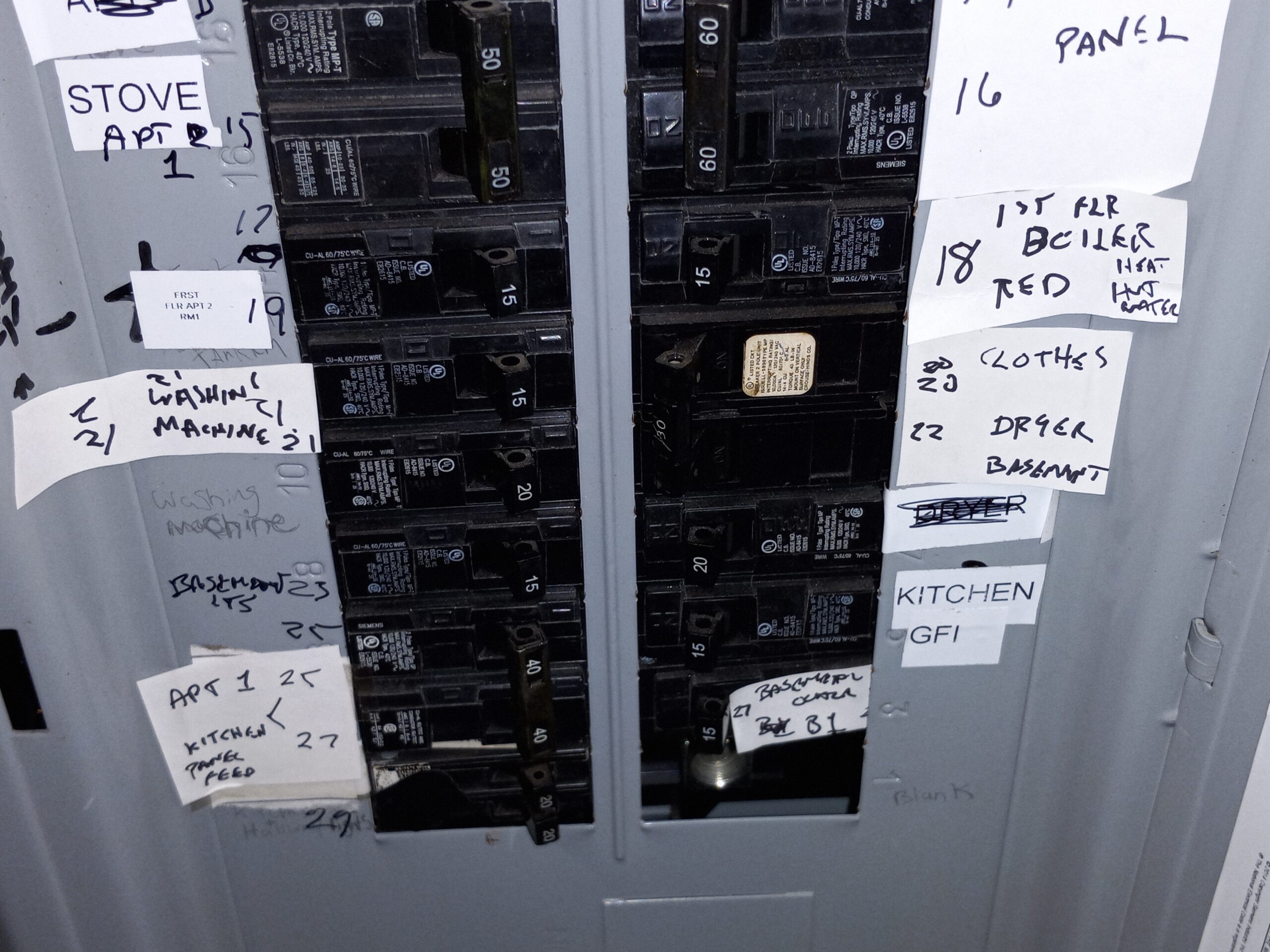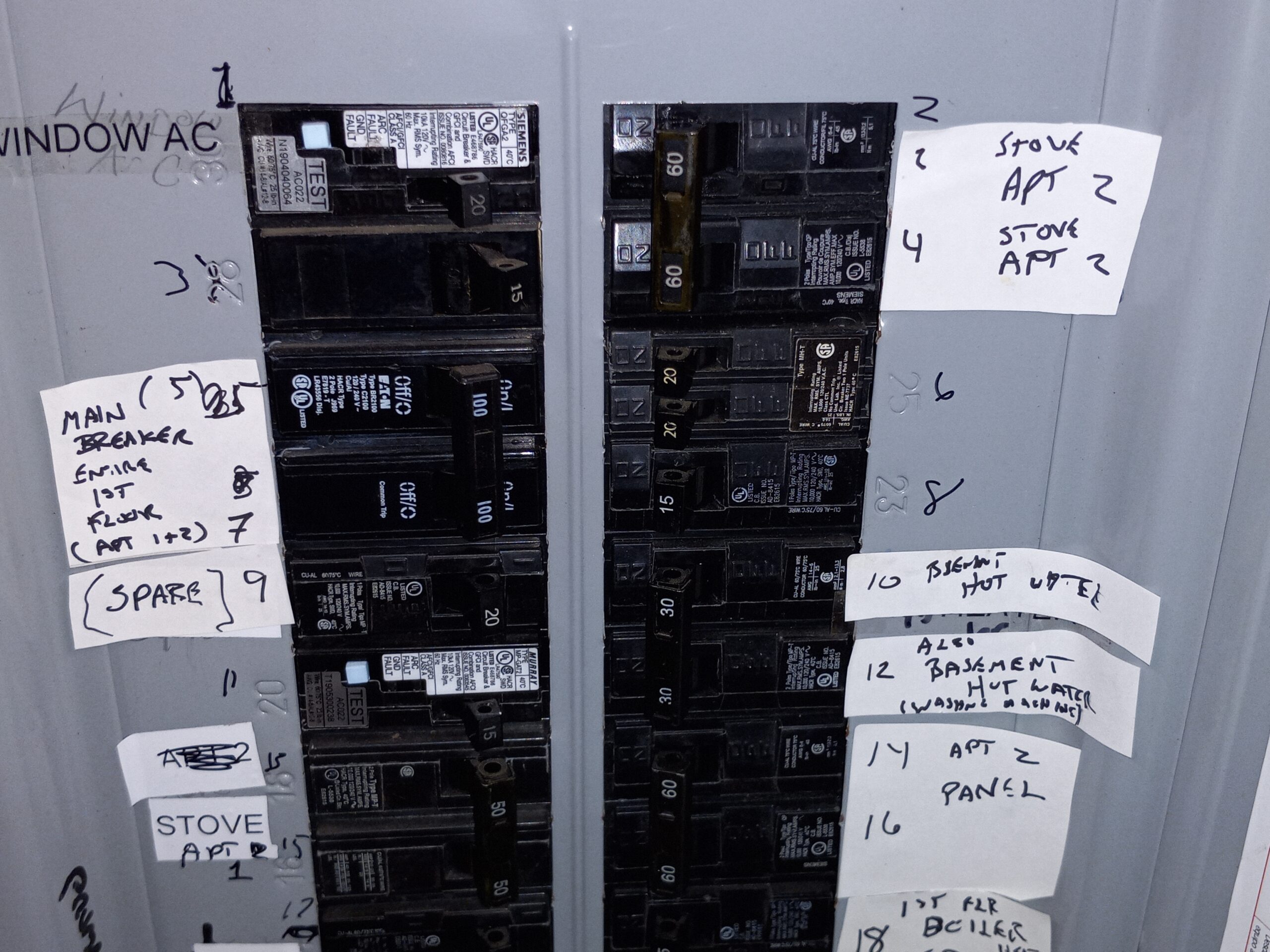One of the greatest shortcomings in house design and construction has to do with fans and the movement of air in general:
The fan you see above just happens to be in my own apartment bathroom, but there are millions of these all over everywhere. And a lot of them . . . just don’t work.
Of course, if you turn them on, it will spin around and make fan sound, but if you perform the acid test, which is, if you hold 2 squares of toilet paper against the vent and then take your hand away, most times the toilet paper with just fall to the ground. If it does that, you immediately know there is no suction of air occurring. It’s fan theater.
Oh sure, they worked when they were first installed, but then, as the damp air from the shower gets sucked out, the lint and dust that is also in the air hits the water on the fan blades and sticks there, and over time it builds up. And as it builds up, it eventually distorts the curve of the “squirrel cage” fan blades and renders them useless. Sort of like icing on airplane wings. And, not to pile on, if that fan stops functioning, you get moisture buildup, and thus mildew and mold.
The only fix I know of is to get up there with a vacuum and clean it out one blade at a time:
This takes us to a broader topic having to do with customer relations. I personally hate it when people “upsell” me and I never do that to clients. Handymanning is a consulting job, and the relationship, and mutual trust, is key. But then there’s the conflict of knowing that in every new customer house I walk into, there is an 80% likelihood that every fan in that house is somehow gummed up with lint, and the function of that fan is compromised. This includes bathroom vents, window air conditioners, furnace blowers, clothes dryer vent pipes, and perhaps worst of all, refrigerators. And now here is Justin looking like he is pressuring you into buying something you didn’t think you needed or wanted.
The hell of all this, I don’t want this job. I do not like to clean. I fix, I don’t clean. But in this arena, cleaning is fixing and making things work. It is also saving energy and carbon dioxide emissions. Plus, the life of your appliances is shortened when gunked up fans and air filters are making the thing run 50% longer than it needs to. And I did not even mention what all that dust does to your lungs as it gets constantly blown thru your house. So I put up with it, as virtually no “house cleaning” service addresses this kind of thing.
Trouble is, the average home owner is simply not at all educated on this need for preventive maintenance. The manufacturers don’t care, they would rather you remain ignorant and be forced to just buy all new everything. So, dear reader, I put it to you: should I not risk sounding like a pesky car salesman selling rust proofing, or do I bring it up and suggest that folks address the lint in their house that is killing their appliances, crudding up their lungs and sinuses, and costing them $10 a month in extra electricity?
____________________________________________
Addendum:
After posting this blog I had a regular client call about something else and while there I suggested that we look at her bathroom ceiling fan. I pulled off the cover and this is what I found:
 Again, when those curved fan blades get all coated with a layer of dust they become totally non-functional. This took a while but I got enough crud off the blades to at least to make the thing work again,
Again, when those curved fan blades get all coated with a layer of dust they become totally non-functional. This took a while but I got enough crud off the blades to at least to make the thing work again,
 I need to go back with a better tool to get more crud out. But, below, you can see the proof of the pudding, at least there is enough air movement now to hold a piece of toilet paper in place.
I need to go back with a better tool to get more crud out. But, below, you can see the proof of the pudding, at least there is enough air movement now to hold a piece of toilet paper in place.












